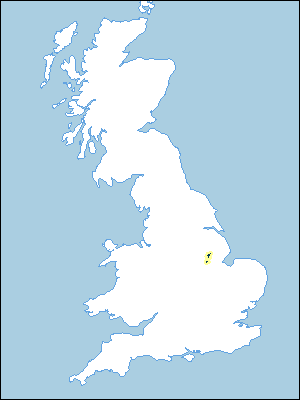
Soil Associations
0343e MARCHAM
Soil and site characteristics
Shallow well drained calcareous coarse and fine loamy soils over limestone associated with similar deeper soils.
Geology
Jurassic limestone
Cropping and Land Use
Cereals, sugar beet and potatoes.
Component soil series
| Subgroup | Series name | Percentage | WRB 2006 link |
|---|---|---|---|
| 3.43 | MARCHAM | 40% | Calcaric Leptosols |
| 5.11 | CRANWELL | 30% | Calcaric Endoleptic Cambisols |
| 3.43 | ELMTON | 15% | Calcaric Leptosols |
| 5.11 | ABERFORD | 10% | Calcaric Endoleptic Cambisols |
Covers 75 km2 in England and Wales
Soilscapes Classification
| 3 |
Shallow lime-rich soils over chalk or limestone |
0343e MARCHAM
Detailed Description
Marcham association consists mainly of the Marcham and Cranwell series, typical brown rendzinas and typical brown calcareous earths respectively, on gently undulating land between 30-100m O.D. in central Lincolnshire. The association occurs on the Lincolnshire Limestone close to remnants of till or plateau sands and gravels. The shallow to moderately deep brown coarse loamy soils are slightly stony, permeable and well drained. Small areas of Elmton and Aberford series are included. Marcham and Elmton series occur mainly on flat plateau sites with Cranwell and Aberford soils in dry valleys and hollows. To the north-west of Sleaford, Cranwell rather than Marcham soils are the dominant component and elsewhere small patches of moderately deep non-calcareous loamy soils occur.
Soil Water Regime
The soils are permeable and well drained (Wetness Class I) and readily accept winter rainfall with little surface run-off. Marcham soils are moderately droughty for arable crops. Cranwell soils, being deeper, have larger reserves of available water and are slightly droughty, although droughtiness varies with the depth to limestone. These droughtiness assessments assume that plant roots abstract a significant volume of water from the underlying, well-fissured limestone.
Cropping and Land Use
Cereals are widely grown on these soils, with sugar beet and potatoes. The soils are easily worked and there are adequate periods for autumn and spring cultivations even in wet years, but surface stones may cause patchy germination, inaccurate seed spacing, and harvesting difficulties in sugar beet and potatoes. Yields from direct drilling of autumn and spring-sown crops are similar to those using conventional techniques. Under grass the main soils have very high trafficability and there is little risk of poaching. The small available water reserves in Marcham soils limit grass growth mainly to spring and early summer but the deeper Cranwell soils give better autumn growth. Grass for drying is grown locally.
0343e MARCHAM
Distribution Map
 |
Note that the yellow shading represents a buffer to highlight the location of very small areas of the association.
Keys to component soil series
Eastern Region
 |
All information Copyright, Cranfield University © 2024
Citation: To use information from this web resource in your work, please cite this as follows:
Cranfield University 2024. The Soils Guide. Available: www.landis.org.uk. Cranfield University, UK. Last accessed 19/04/2024
